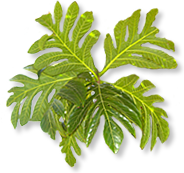
Why study agricultural sustainability, food production, how to protect the environment and manage urban landscapes in the Tropical Agriculture and the Environment (TAE) Program at the University of Hawai‘i at Mānoa?
The Hawaiian Islands are the most isolated archipelago on Earth, home to 377 endangered species, of which 58 are animals and 319 are plants. The islands varied tropical environments provide a unique setting for studying plants and soils and their interaction. Soils belonging to all 11 known soil orders can be found here, as are 11 of the world’s 13 climatic zones.
 We provide an exceptional learning experience in a place like no other…
We provide an exceptional learning experience in a place like no other…
In this remarkable setting, students in the Tropical Agriculture and the Environment (TAE) undergraduate program at the University of Hawai‘i at Mānoa (UH Mānoa) learn how to responsibly manage land, water, crops, and agricultural systems. Our STEM undergraduate and graduate degree programs prepare students to solve complex problems using innovative applied science methods, with the goal of improving plant production, ensuring a sustainable safe and abundant food supply, to protect the environment and meet our community’s needs.
Despite today’s challenging economy, the U.S. Department of Agriculture predicts promising employment prospects for TAE students. The United States currently generates an estimated 54,400 annual job openings in the agricultural, food, and renewable natural resources sectors for individuals holding baccalaureate or advanced degrees, while at the same time fewer plant scientists, soil scientists, and horticulturalists are entering the job market. On average, 29,300 graduates in agriculture and natural resources enter the work force each year, as do about 24,200 degree holders in allied fields. In the next several years, demand for skilled agriculture, forestry, and environmental science graduates is expected to outstrip supply.
Optimizing Our Resources
By 2050, you, your children, and your grandchildren may be sharing the planet’s limited resources with 9.1 billion people. Worldwide food demand is expected to increase by 70%, and an additional 120 million hectares of land may be needed for food production in developing countries. As a soil scientist, you can help farmers use their land more sustainably, efficiently and safely. While nutrient-poor soils can limit crop yields, adding too much fertilizer increases production costs and can damage aquatic environments and sources of drinking water. Soil organic matter increases retention of water and minerals that plants need for growth. With optimized soil nutrient levels and improved soil structure, we can sustainably grow more food per acre.
Developing A Healthy World
Fruits and vegetables are essential for good health. In the developing world, vitamin A deficiency affects about one-third of all children and contributes each year to the death of 670,000 children under the age of five. In the United States, diets that include generous portions of fruits and vegetables may offer protection from stroke, type 2 diabetes, cardiovascular disease, hypertension, and some types of cancer. As a plant scientist, you can help increase the availability of wholesome, nutritious food by breeding fruit and vegetable crops that tolerate pests, diseases, or adverse conditions, provide enhanced levels of vital nutrients, or spoil less quickly. By identifying postharvest practices that minimize damage and decay, you can prevent food losses and waste.
Caring For Our Environment
The relative severity of future climate change hinges on how much we curb CO2 emissions during the next 40 years. A widely adopted goal—limiting global warming to 2°C above pre-1900 temperatures—is predicted to require cutting CO2 emissions to one-half of 1990 levels by 2050. Faculty who are part of the TAE academic program are investigating how we can sustainably use plants and soils to limit greenhouse gas emissions. Hardy non-food crops that thrive on marginal land can provide biofuels without displacing food production. Generating biochar (stable charcoal) from agricultural wastes and using it as a soil amendment can sequester carbon in soil while improving soil fertility. Rooftop gardens or plant beds, known as green roofs, can help insulate buildings and provide energy savings.
Helping Hawai‘i Achieve Greater Self Sufficiency
Agricultural advances can help Hawai‘i achieve greater self-sufficiency that is sustainable and resilient. Our reliance on imports, which represent 85 to 90 percent of our food and more than 90 percent of our energy needs, makes us more vulnerable to natural disasters, invasive species, human misdeeds, and rising fuel prices. Keeping agricultural land in crop production conserves green, open space and allows rainwater to recharge our aquifers. The work you do as a TAE student and graduate can help shape a more sustainable and affordable Hawai‘i for future generations.


